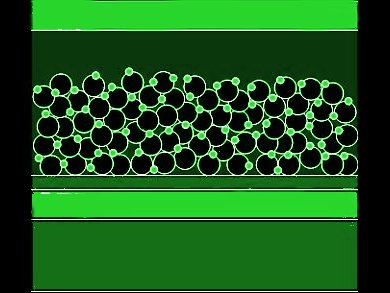Dye-sensitized solar cells (DSSCs) are made from inexpensive components and can be fabricated via low-cost manufacturing processes. Their long-term stability and durability is limited, because the organic liquid electrolyte containing the iodide/tri-iodide redox couple is corrosive, and prone to leaking, and it can react with the dye and other cell components. Replacements for iodine-based liquid electrolytes have been extensively studied, but the efficiencies of the resulting devices remain low
Mercouri G. Kanatzidis, Northwestern University, Evanston, IL, USA, and colleagues report a new type of all-solid-state, inorganic solar cell system that consists of the p-type direct bandgap semiconductor CsSnI3 and n-type nanoporous TiO2 with the dye N719 (cis-diisothiocyanato-bis(2,29-bipyridyl-4,49-dicaboxylato) ruthenium(II) bis-(tetrabutylammonium)).
The solid-state DSSCs show conversion efficiencies of up to 10.2 % (8.51 % with a mask). With a bandgap of 1.3 electronvolts, CsSnI3 enhances visible light absorption on the red side of the spectrum to outperform the typical DSSCs in this spectral region. The new cells stand up well to high temperatures, high levels of humidity, and accelerated ageing tests.
The study may lead to new types of inexpensive, long-lasting, and high-performing solar cells composed entirely of solid-state components.
- All-solid-state dye-sensitized solar cells with high efficiency,
In Chung, Byunghong Lee, Jiaqing He, Robert P. H. Chang, Mercouri G. Kanatzidis,
Nature 2012, 485.
DOI:10.1038/nature11067




